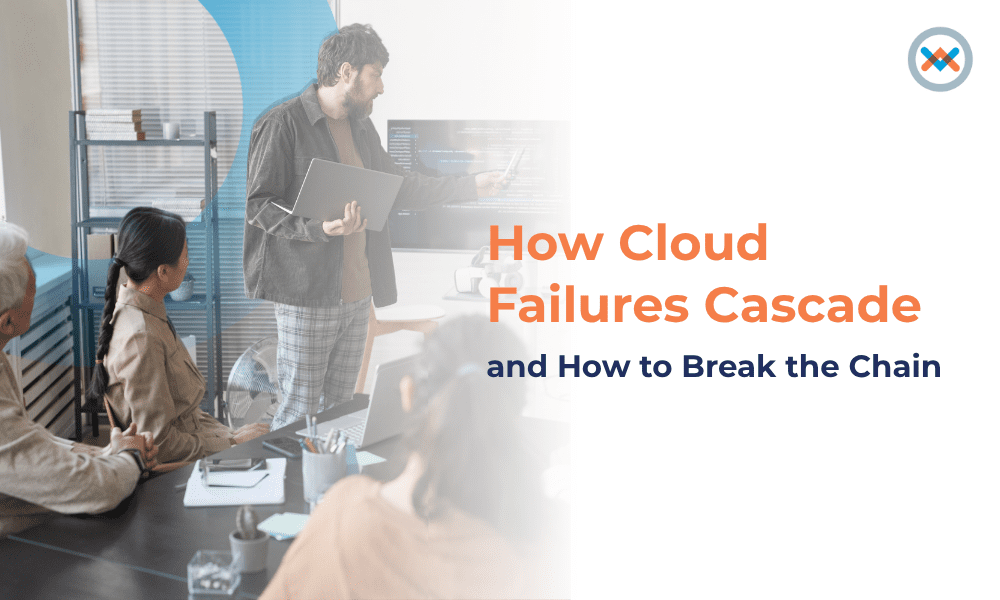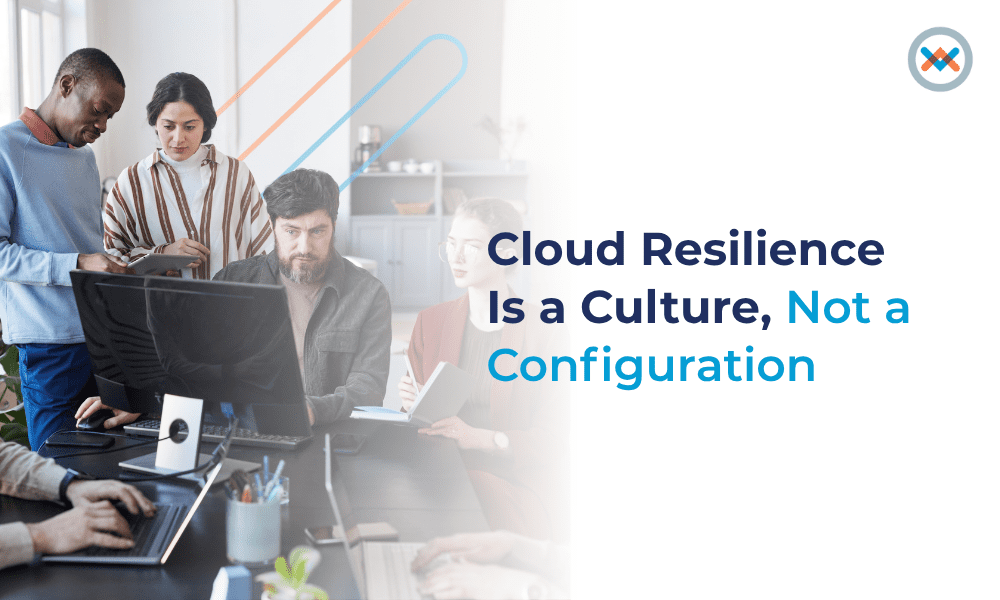A Small Glitch, a Big Impact
In October 2021, Facebook, Instagram, and WhatsApp went offline worldwide for nearly seven hours after an internal maintenance command accidentally disconnected Facebook’s backbone network. The change withdrew key BGP routes that made its Domain Name System (DNS) unreachable — cutting off not only users, but also internal tools and communication.
That single misconfiguration cost millions in revenue and reputation — and proved a critical lesson: in the cloud, failures rarely stay contained. One overlooked dependency can trigger a chain reaction that spreads faster than teams can respond.
The Blast Radius Explained
Think of your infrastructure as a field of dominos. Each service, database, and connection stands upright, dependent yet distinct. When one domino falls, how far the impact spreads is your blast radius.
Your blast radius is the zone that goes down before recovery kicks in — the users, workloads, or services caught in the impact. In tightly coupled architectures, one fault can ripple into a full system disruption.
If your DNS routes everything through a single service, one misconfigured record can make every endpoint unreachable. If your database and compute workloads live in the same region, a regional outage can instantly take everything offline. Even serverless or containerized environments, built for flexibility, can become fragile if service dependencies aren’t clearly defined.
Reducing blast radius isn’t about avoiding every failure. It’s about keeping failures short, visible, and recoverable.
Design for Containment
Containment starts in architecture. The goal is not perfection — it’s control. lLimit the damage each issue can cause, and you limit the outage.
1. Segment by Function and Region
Separate workloads by function (production, staging, development) and region (multi-zone or multi-region). This ensures that if a misconfiguration hits the staging environment, it shouldn’t touch production. If one region experiences an outage, other regions can still serve users.
Do: keep distinct credentials, routing tables, and security policies per environment.
Don’t: reusing identical IAM roles or shared buckets that link all environments together.
Proper segmentation is the foundation of fault containment. It’s what prevents a single problem from becoming a cross-system outage.
2. Build in Redundancy
Redundancy is resilience’s safety net. Use redundant DNS servers, dual load balancers, and data replication across multiple regions. Employ active-active architectures when feasible so workloads can shift instantly if a component fails.
Replication costs money. Downtime costs trust. Always know which one your customers value more. Even limited redundancy, such as asynchronous backups or mirrored storage, can significantly reduce risk.
3. Strengthen Load-Balancer Hygiene
Load balancers keep the lights on — until they don’t. They can amplify risk when neglected.
Common failure points include:
- Misconfigured routing rules that send traffic to unhealthy nodes.
- Missing or outdated health checks that delay failover.
- Old routing logic that doesn’t match your current network setup.
Routine configuration reviews and automated testing ensure your load balancer routes traffic safely — not blindly.
4. Use Service Dependency Mapping
You can’t contain what you can’t see. Map the relationships between applications, APIs, storage systems, and external dependencies. Visual dependency graphs can help reveal which services rely on shared credentials, APIs, or network links. When an incident hits, visibility buys you speed. Teams can isolate the problem instead of scrambling in the dark.
5. Test Your Failover Logic
A failover plan only works if it’s been tested under stress. Run simulations where you intentionally disconnect regions, overload APIs, or disable certain nodes. Measure failover speed, alert accuracy, and user impact. If recovery takes longer than expected, it means you need to adjust the configurations and do a retest.
Containment through testing turns theoretical readiness into practiced resilience.
When systems are segmented, redundant, and observable, even major outages become manageable, like a spark in a fire-safe compartment instead of a wildfire spreading unchecked.
Test for Readiness
You don’t find resilience in a crisis, — you build it before one hits.
To build true readiness, test both technology and teams:
Simulate Real-World Conditions
Run controlled experiments such as regional outages, latency spikes, or expired certificates.
Measure how systems fail, alert, and recover under pressure.
Validate Human and Process Readiness
Technology alone doesn’t ensure resilience. Evaluate whether:
- Teams clearly understand their escalation paths.
- Communication protocols function smoothly during downtime.
- Incident reviews result in concrete follow-up actions.
Rehearse Regularly
Tabletop exercises, post-mortem reviews, and “game days” help teams practice calm response and refine coordination. When you test consistently, failure becomes familiar. And familiarity is the foundation of calm, effective recovery.
Readiness Is Resilience
Every system will fail eventually. The difference lies in how far that failure travels.
Resilient organizations aren’t the ones that avoid downtime forever; they’re the ones that recover quickly, communicate clearly, and maintain control under pressure. Containment, redundancy, and visibility don’t prevent every failure, they keep failures small and manageable.
Resilience begins with readiness. It’s not luck, not chance, and not just backup, it’s intentional design and disciplined rehearsal.
Talk to Wowrack today. Let’s stress-test your architecture, close the weak links, and make sure the next failure stops with you.







